Data projects
Ready to Dive In?
Book your live demo Today
+3000
+25
Countries
8.5/10
Overall satisfaction rating from our customers
[Event] Meet Opendatasoft at Big Data LDN 2025
book a meeting!Data governance covers how you handle and use the data collected and used within your organization. In a world that is increasingly driven by data, understanding what data you own, how it is being used, and who has access to it, is crucial for developing a data-driven culture, managing risk and meeting growing compliance requirements.
Delivering on this data governance meaning may seem simple, but the volume, variety and velocity of data being generated and shared across multiple locations makes it much more complex and difficult to achieve. It requires a combination of a strong data governance policy and framework, an internal culture that values and understands the importance of data, and robust tools to manage, monitor and report on data governance across the organization.
At its heart data governance ensures that an organization’s data delivers value and is used correctly by everyone. Data governance meets both reactive and proactive goals.
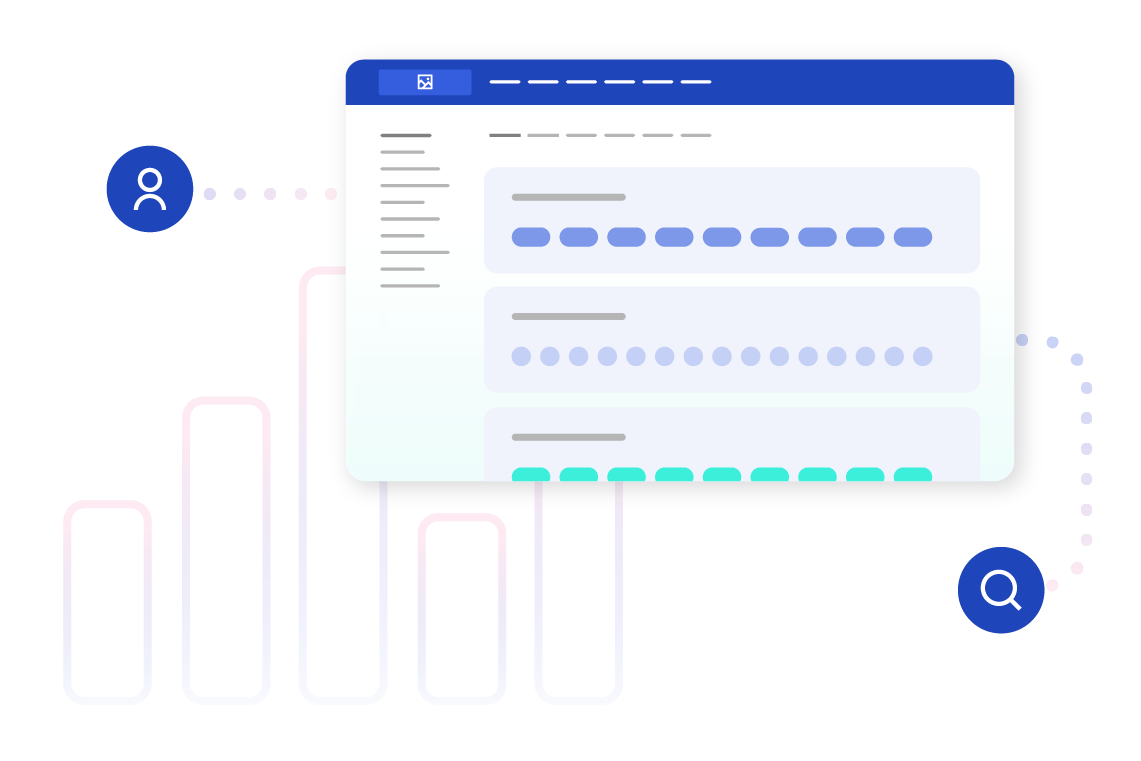
At a reactive level it reduces risk by ensuring that data is:
Proactively data governance aims to create additional value by:
by breaking down silos between departments and creating a shared vocabulary around data
to boost innovation, efficiency and agility
Enabling data democratization and the formation of a data-driven culture
Data is generated and used across the business, meaning that everyone needs to be involved in data governance programs if they are to succeed. Given its importance, it requires senior level buy-in and support to demonstrate its value to the business at both a strategic and operational level.
Data governance programs involve a variety of roles, working as a team:
Data governance delivers a range of benefits across the organization, which are seen both internally and externally:
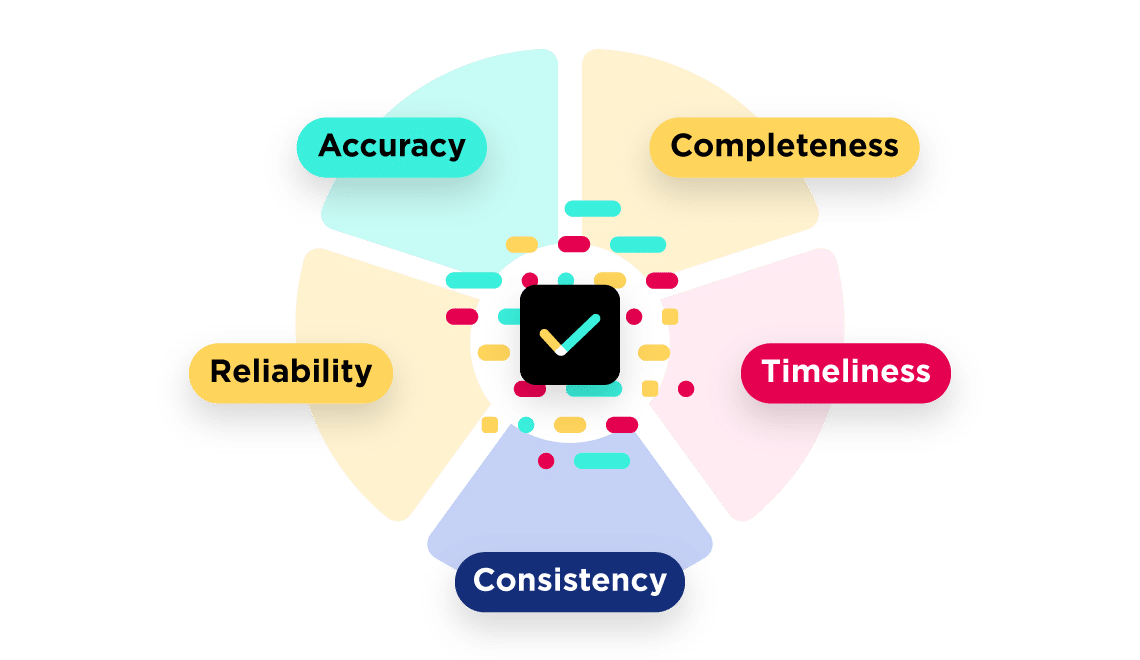
Setting and enforcing enterprise data governance standards underpins improved data quality across the organization. It ensures that data is consistent, accurate, complete, relevant, timely and uses the same vocabulary to describe terms and entities. So a “customer” refers to the same thing whether it is within a field in data from sales, finance or marketing. All of this builds trust in data, encouraging its greater use, especially by those who were not involved in its creation. To learn more about improving data quality read our blog.
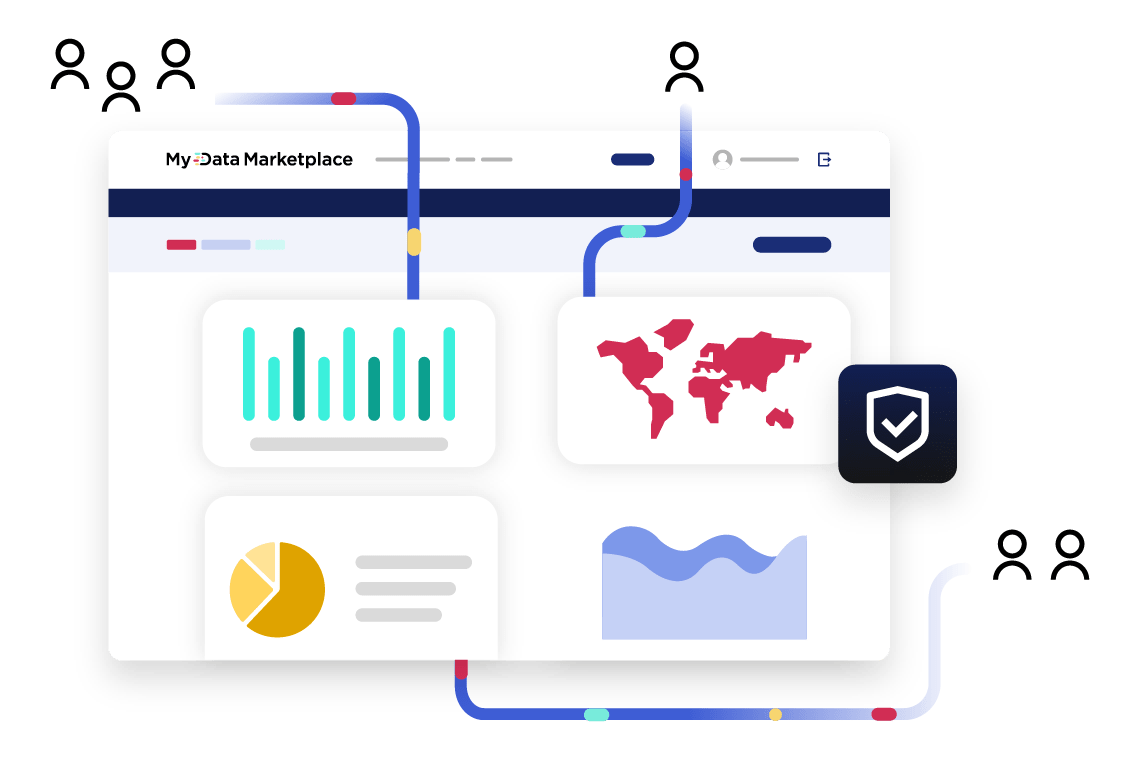
A growing number of organizations are subject to compliance regulations of some sort. This can be specific to their sector (such as financial services), or be more generic around how they handle and protect data (such as the GDPR, CCPA and potentially the forthcoming American Privacy Rights Act). Data governance is essential to both delivering accurate data to demonstrate compliance (for example, showing that financial anti-money laundering regulations are being met or providing data on gender pay), and for ensuring that the data an organization holds is processed and managed in compliance with legislation such as GDPR and CCPA. Robust data governance processes ensure that compliance reporting is faster and more efficient, while helping guard against failures that can lead to large fines.
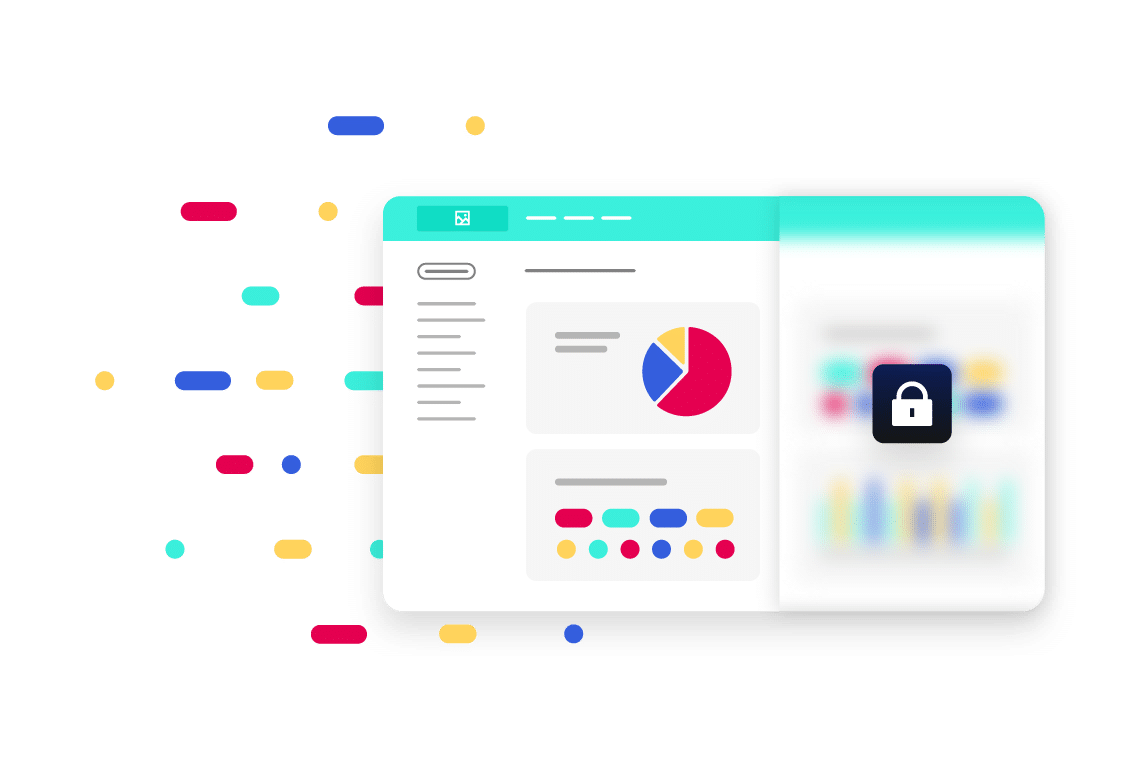
By understanding their complete data landscape, governance provides organizations with the information they need to manage risk. For example, they can identify potential issues with data, better understand any impacts, and put in place strategies to reduce them. Data governance puts in place common rules and processes for sharing data, providing safeguards that ensure data is both secure and only accessible by authorized users. Not only does this guard against financial risks (such as compliance fines), but also helps lower reputational risks by preventing issues such as data breaches or bias in AI models that damage an organization’s brand reputation or lead to lawsuits.
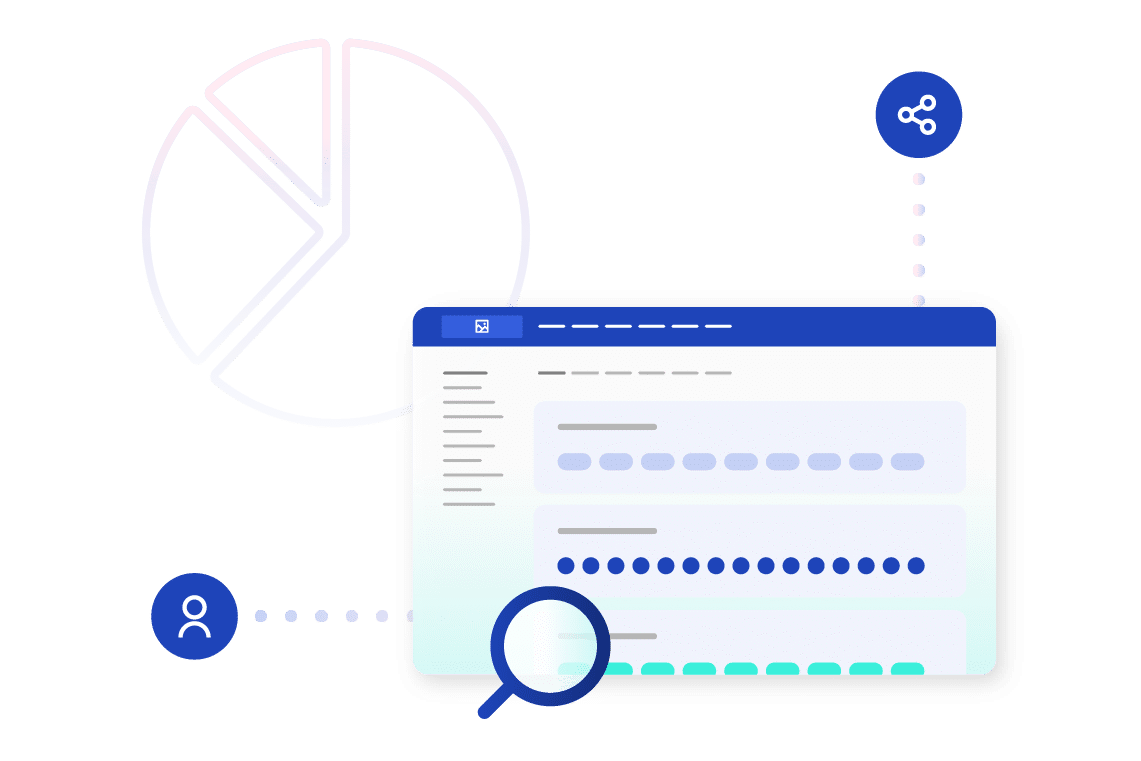
Citizens, consumers, regulators, investors and employees increasingly demand that organizations are open and transparent around their activities. Transparency may be mandated by law, such as open data and Freedom of Information regulations within the public sector, or may be more voluntary, such as enterprises reporting on their progress towards environmental or corporate social responsibility (CSR) goals. When it comes to transparency data governance ensures that any data shared publicly is complete, accurate and understandable by all stakeholders.
In a fast-moving, turbulent world, organizations need to be agile enough to react to new opportunities. They need to be able to make more decisions, more quickly – and accurate decision-making requires up-to-date, high-quality data. Data governance ensures that data is collected from across the organization, checked for accuracy, and then shared with those that need it, underpinning better, faster decision-making and enabling organizations to seize new opportunities. Increasingly, companies are deploying artificial intelligence (AI) models to either make decisions alone, or to support humans by analyzing huge volumes of data. Without well-governed, quality data, there is a major risk that AI models will make inaccurate or potentially biased decisions, impacting company success and damaging reputation.

Shared data is central to enhancing collaboration, both internally and externally. It breaks down departmental silos, enabling employees to work together in key areas, while building wider ecosystems in particular industries. For example, as the energy sector looks to decarbonize, it needs to work more closely with a wide range of stakeholders, including local government, renewable power developers, start-ups, academics and others. Data is the fuel to drive collaboration and innovation – but without consistent data governance processes, there is a major risk that poor data quality will undermine success.
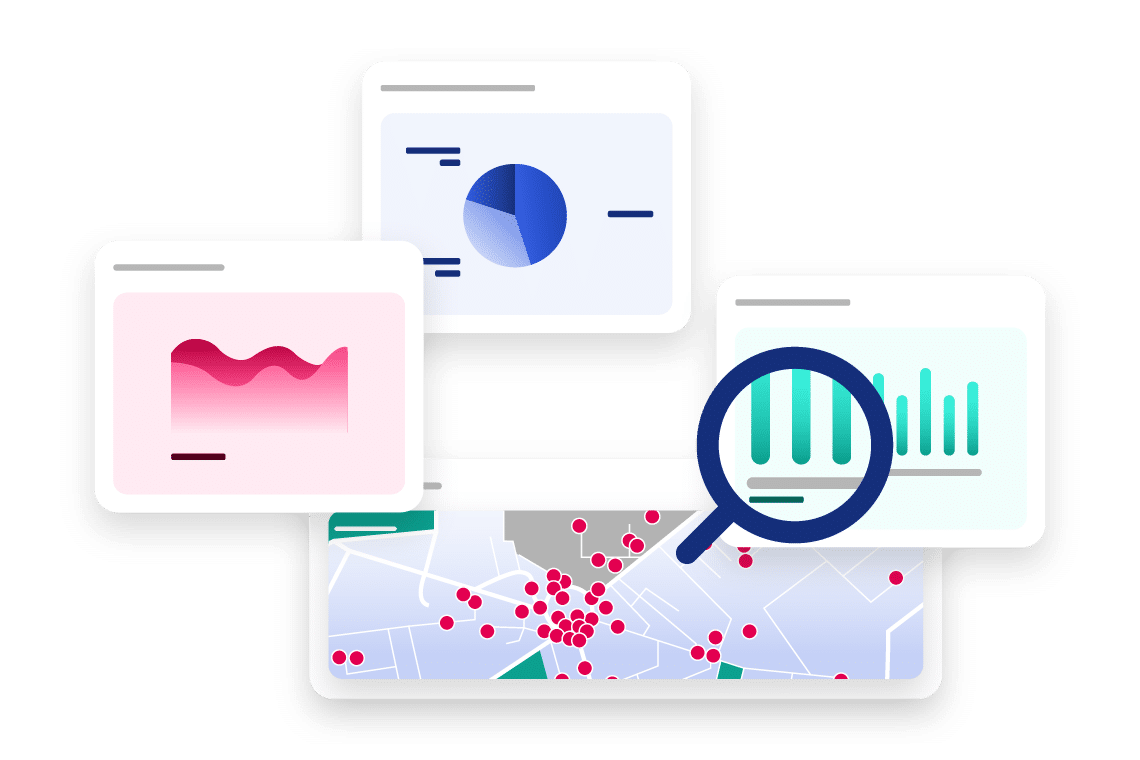
Successful data democratization relies on providing everyone, internally and externally, with seamless access to relevant, trustworthy and accurate data in formats that non-specialists can easily understand and benefit from. This maximizes data value and helps create a data culture across the organization and wider society. Data governance ensures that data assets are accurate, high-quality and consistent, providing the foundation for data democratization.
Learn more in our blog about the link between data governance and data democratization.
Showing the financial impact of all of these benefits, McKinsey says that “data governance is one of the top three differences between firms that capture the value of digitization and firms that don’t.”
Despite the clear benefits that they bring, unfortunately a large percentage of data governance strategies and programs fail – up to 80% by 2027 according to research from Gartner. To avoid this fate organizations should follow these six data governance best practices and key principles:
At the heart of successful data governance is a robust framework that covers both strategic and day-to-day activities. The exact scope of this framework will vary between companies and industries. For example, compliance-heavy industries such as financial services, or sectors handling extremely sensitive information, such as healthcare, will have different requirements to more open sectors such as retail, for example.
The framework also has to reflect the organization’s size, structure and level of data maturity. Again, a siloed business that has not yet fully embraced data, will require a more gradual approach to one where data democratization is a key business objective.
It is vital that the framework is agreed and supported by both senior management and departmental/business heads. They should therefore be involved in its development, alongside the Chief Data Officer and data governance specialists.
Begin in two areas:
Once this framework is created it can then be translated into operational processes and defined technical needs. At this point relevant data governance tools can be deployed – but it is important to set strategy based on business objectives first, before looking at technical solutions such as data governance software.

Businesses need to understand what data they hold across the entire organization. Data catalog tools can help to create this inventory of data by bringing all data assets together in a single location, documenting them (including metadata), and providing access to relevant information through search.
However, traditional data catalogs are limited in their scope and how they support data governance. For example, they are technical tools that can only be used by specialists and don’t give direct access to the data itself. Essentially, they are like the index of a book, listing page numbers but without linking to each page directly.
Learn more about the limitations of data catalogs, and why you need to move beyond them in order to democratize data in our blog.
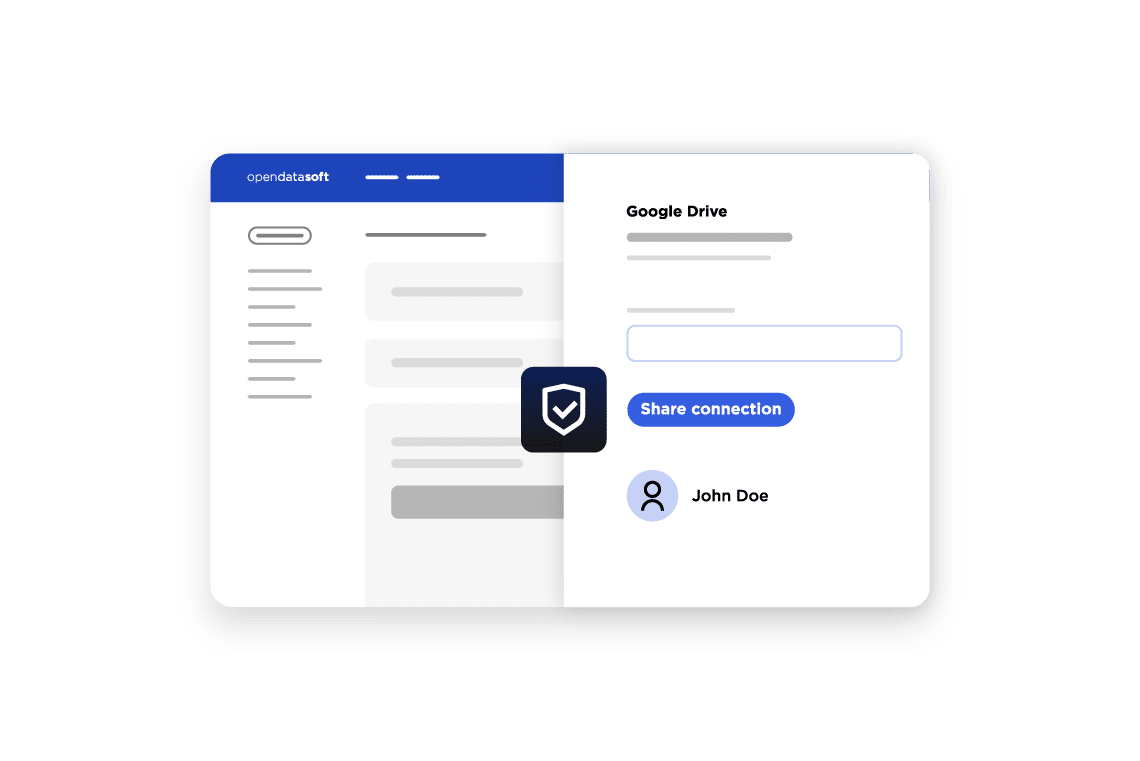
To apply your data governance framework you need to develop and deploy rigorous policies and procedures. These have to be clearly set out, with everyone involved in data fully trained and up to speed on why they are important and why they should be followed. Rules should begin by incorporating external regulations, ensuring compliance with laws and standards and they should also be cross-referenced with other company policies, such as around data retention, data access and privacy to provide consistency. It is vital that data governance is not seen as solely a policing function, telling individual data owners and departments what they can and can’t do with their data. Education is vital – stressing the wider benefits of following processes will help drive voluntary compliance within the organization.
Data governance covers the entire organization and stretches across multiple jobs, including data owners, stewards and custodians. It is vital that everyone understands what their particular role entails, how they deliver it on a day-to-day basis and what their overall targets are.
For example, data governance should cover:
Documenting who owns particular data assets within the organization and is therefore responsible for their quality, security and compliance. These data owners should be accountable for their data assets, including updating them, fixing any issues, collecting feedback on their use and making improvements as required.
Outlining the people responsible for data within specific domains or business units. Operating at a higher level than data owners, these data stewards are responsible for implementing data governance policies, enforcing data standards, and ensuring data quality and integrity.
There are clear differences between data governance vs data management. Data governance is a more strategic, business level program, while data management is a more technical discipline. Data management supports data governance by ensuring that data flows correctly between systems, is in the right formats, and is stored and protected using technical tools.
Learn more about Data management in our Practical Guide.
It is easy to see data governance as simply requiring organizations to create and enforce a framework around data collection, storage and sharing. This is far from the truth. The reason that many programs fail is that they focus on rules and technical infrastructure rather than understanding the human and cultural factors required. Given data governance covers the entire organization, it must gain buy-in from every department, and can involve significant changes to how people work. This requires culture change, which can be difficult and lengthy, making data governance a long term project that has to involve significant communication and training programs, backed up by senior level backing.
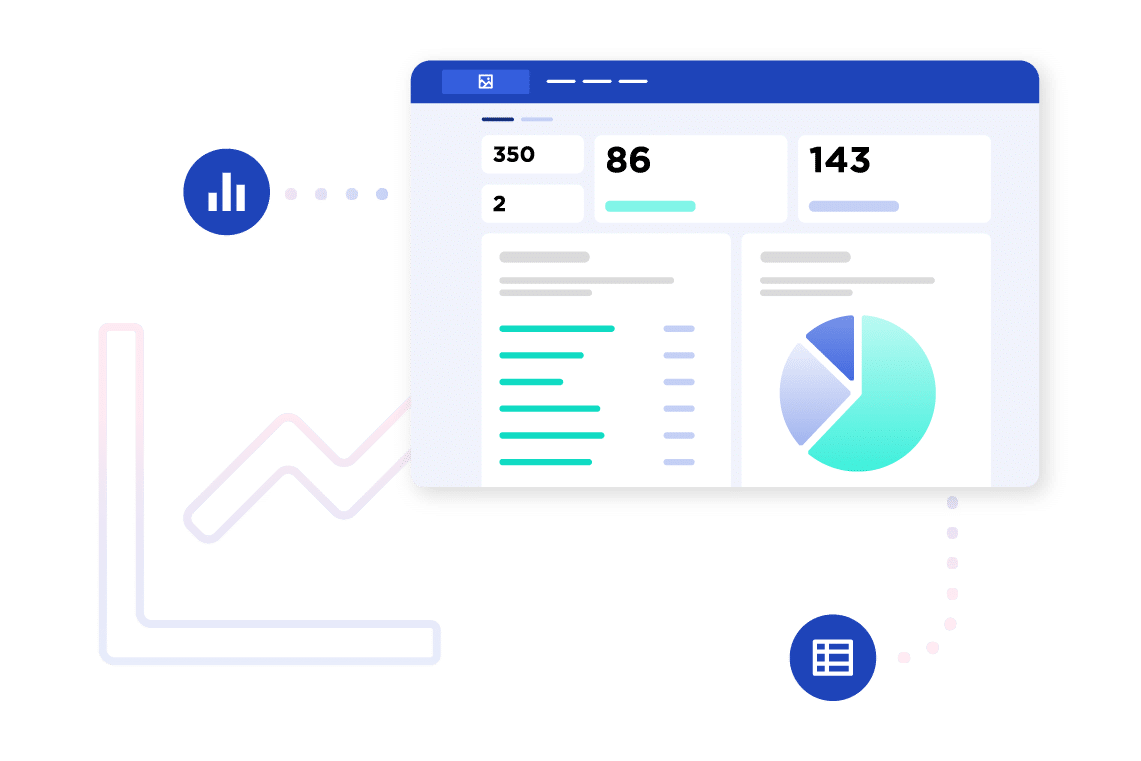
Ensuring that data governance programs are delivering results and business value is crucial to their long-term adoption. CDOs and Data Governance Officers need to monitor that rules and processes are being followed correctly, working with data owners and data stewards to enforce consistency within the organization. To demonstrate the benefits teams should actively look for success stories, where data governance has enabled new uses for data, external sharing, innovation or collaboration, and communicate them as widely as possible.
A further reason for regular monitoring is that a company’s data landscape is always changing and evolving, with new datasets created, acquired or added to data governance programs. These need to be located, processed and standardized based on data governance frameworks and policies, extending the program’s reach and ensuring it is comprehensive and business-focused.
Data governance is crucial to maximizing the value that data provides and accelerating progress towards full data democratization. Successful programs require a combination of processes, culture and the right technology tools to automate and underpin governance frameworks. While many organizations traditionally used data catalog solutions to inventory their data to support governance, this is no longer sufficient in a fast-moving world with increasing data volumes and a requirement to democratize data through easy to use, intuitive tools.
Consequently, a growing number of organizations are deploying internal data portals to provide a single point of access to their data, and a focus for their data governance. Data portals enable successful data governance through nine key capabilities:
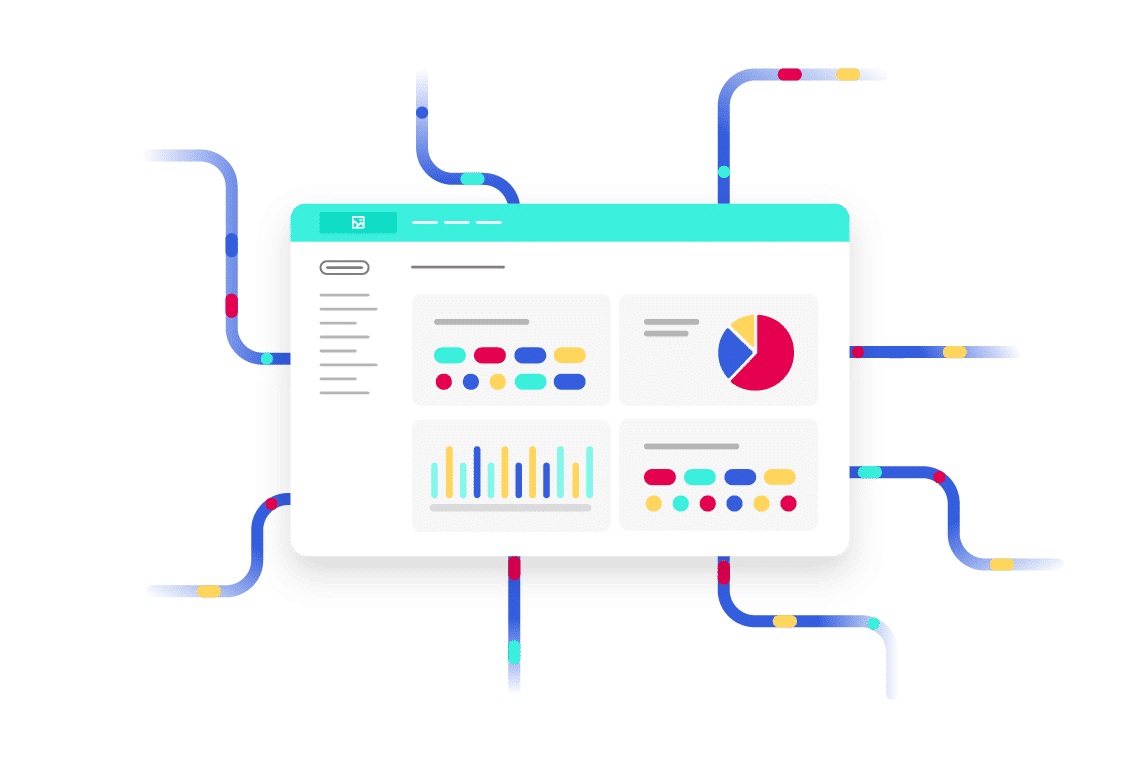
Data portals bring together all of an organization’s data assets in one place, wherever they were first created. This centralized access ensures that there is a single version of the truth – users can be confident that data assets on the portal have been through a full data governance process and that they are high-quality, accurate, timely and easy to understand. Unlike a data catalog, which merely lists data, a data portal enables users to actually access data assets through an intuitive interface, making the whole process seamless, especially for users that are not data experts.
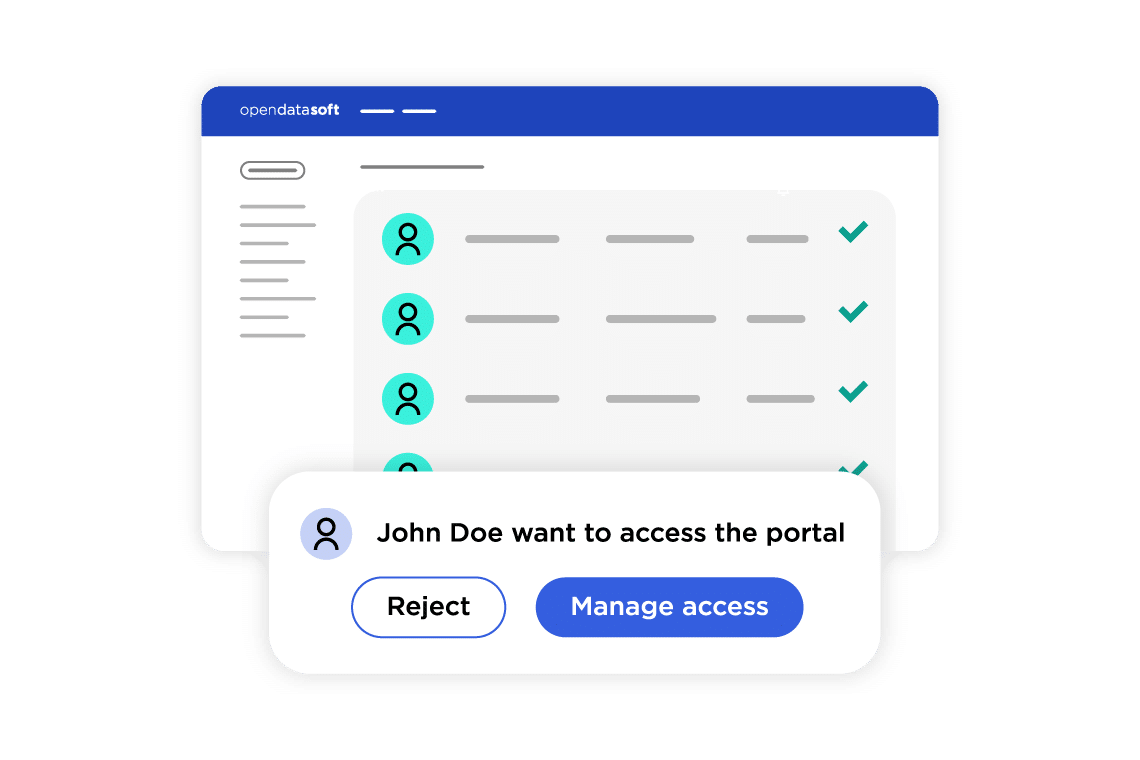
Data governance rightly limits who can see and use sensitive data, particularly confidential or customer information. Data portals balance this need for security with making data easily available to those they need it. They feature built-in access management and rights management capabilities that limit the data that particular users can view, based on their role and seniority. They should also include the ability to request access, with a full workflow in place to ensure that data owners can review and grant or block access as required.
Access management is important across every industry, but particularly for those dealing with confidential and identifiable customer or citizen information. Municipalities are a good example of a sector with rigorous access management requirements, as our blog explains.
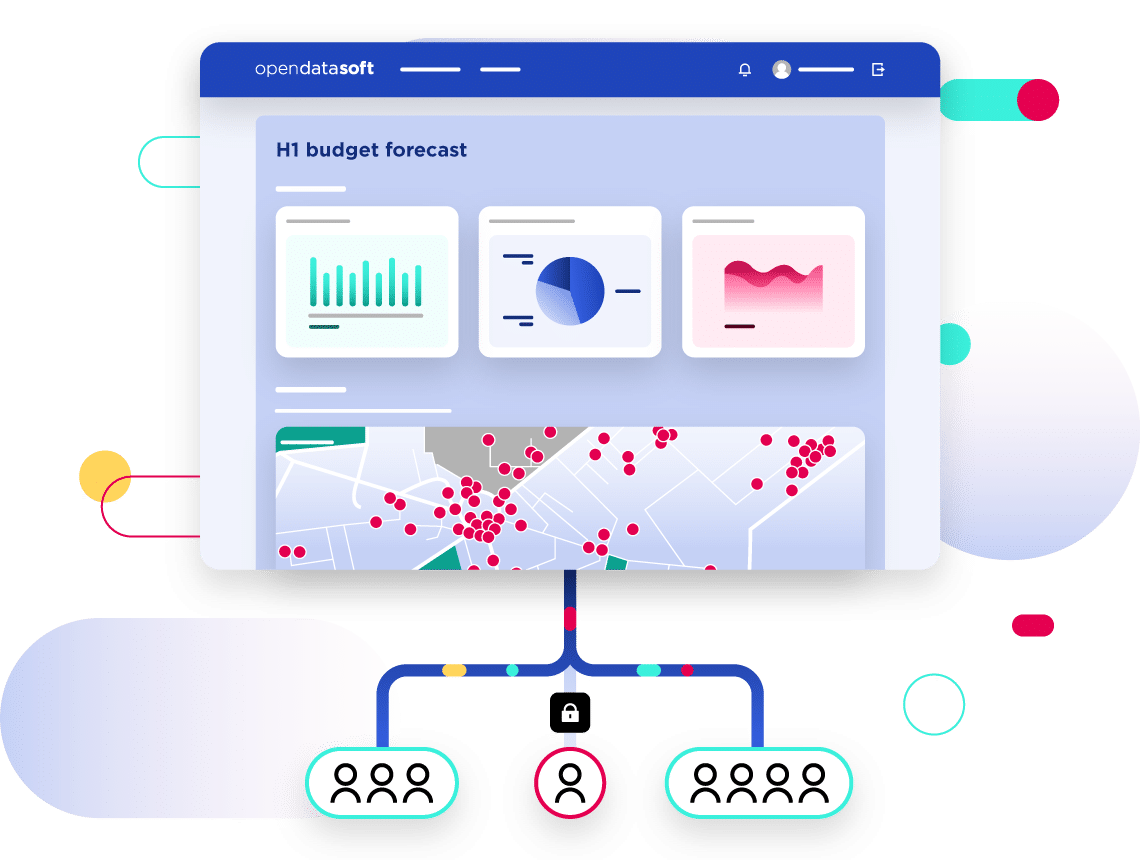
To upload data assets to a portal, it has to undergo a range of data governance processes to ensure quality, accuracy and timeliness. These mean that data assets can be used with confidence, as unreliable data is weeded out and all formats are standardized. As every data asset includes the details of its owner, any queries around quality can be swiftly followed up. Data governance and data portals therefore work hand-in-hand to support each other, reinforcing the shift to data democratization.
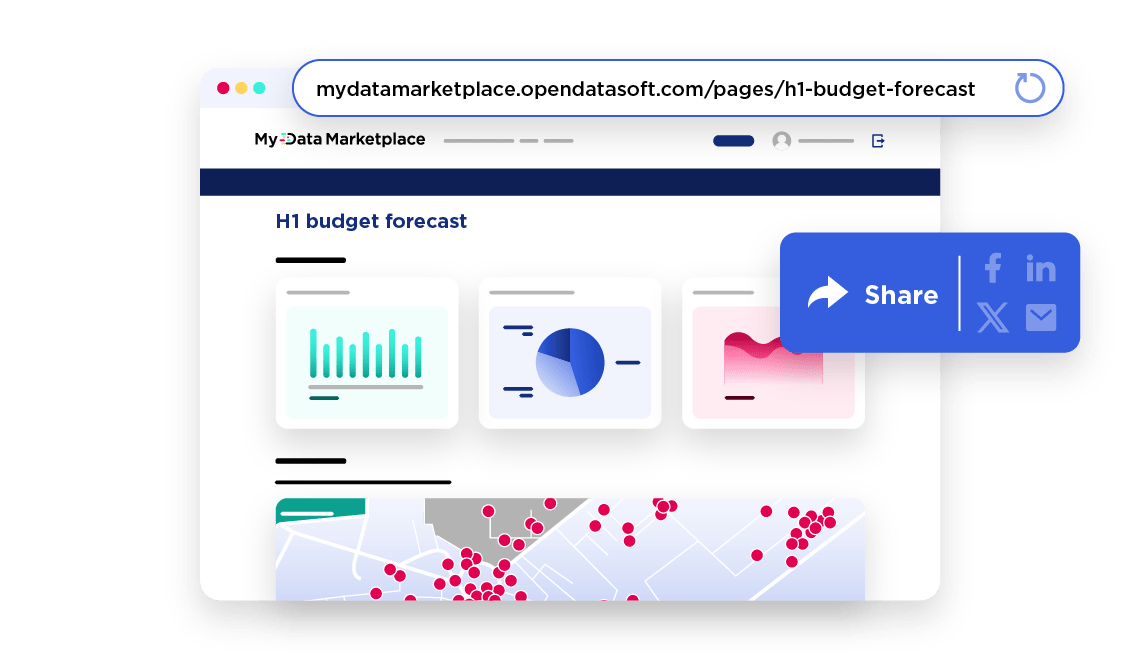
The key objective of data governance is to proactively increase the use of data across the organization, with all the benefits this brings in terms of decision-making, efficiency, innovation, transparency and collaboration. Data portals encourage greater data sharing by providing data assets in understandable, accessible formats, such as visualizations and dashboards, so that they can be discovered and used by everyone. Essentially, they provide the same intuitive interface as an e-commerce marketplace, accelerating access to data and maximizing its reuse and value.
The best way to create a company-wide data culture is to encourage users to experiment, accessing data assets and incorporating them into their daily working lives. Data portals underpin data cultures by making all relevant data easily available at scale, through an intuitive, easy to use one-stop shop that is backed up by full documentation and training. People then learn by doing, building confidence and increasing the buy-in for data governance and data democratization.
Learn more about maximizing business value through data portals in our blog.

As the variety and volume of data has grown dramatically, organizations have invested heavily in a range of solutions to manage and govern their data to industrialize its use. Data portals are designed to seamlessly integrate into the wider tech and data stack, using connectors and APIs to enforce data governance standards up and downstream in data flows.
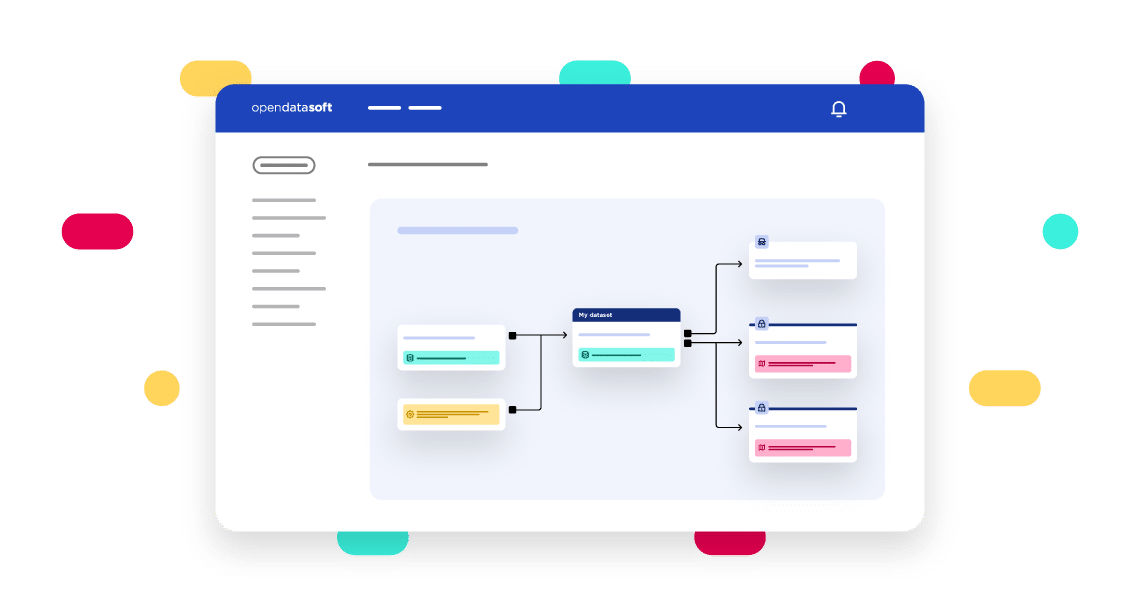
Data lineage capabilities highlight the relationships between different data assets over time, enabling teams to visualize data flows in real-time, across the whole lifecycle from collection via transformation to reuse. By helping companies analyze how data is being used, data lineage has a key role in reinforcing successful data governance strategies. For example, it shows which data is being used, by whom, and what these reuses are across the wider ecosystem. Administrators can see which data assets are most popular, and which, for example, need to be improved or can be safely removed from the portal. This focuses and streamlines data governance efforts while meeting the needs of users.
Read more about the benefits of data lineage on data governance in our blog.
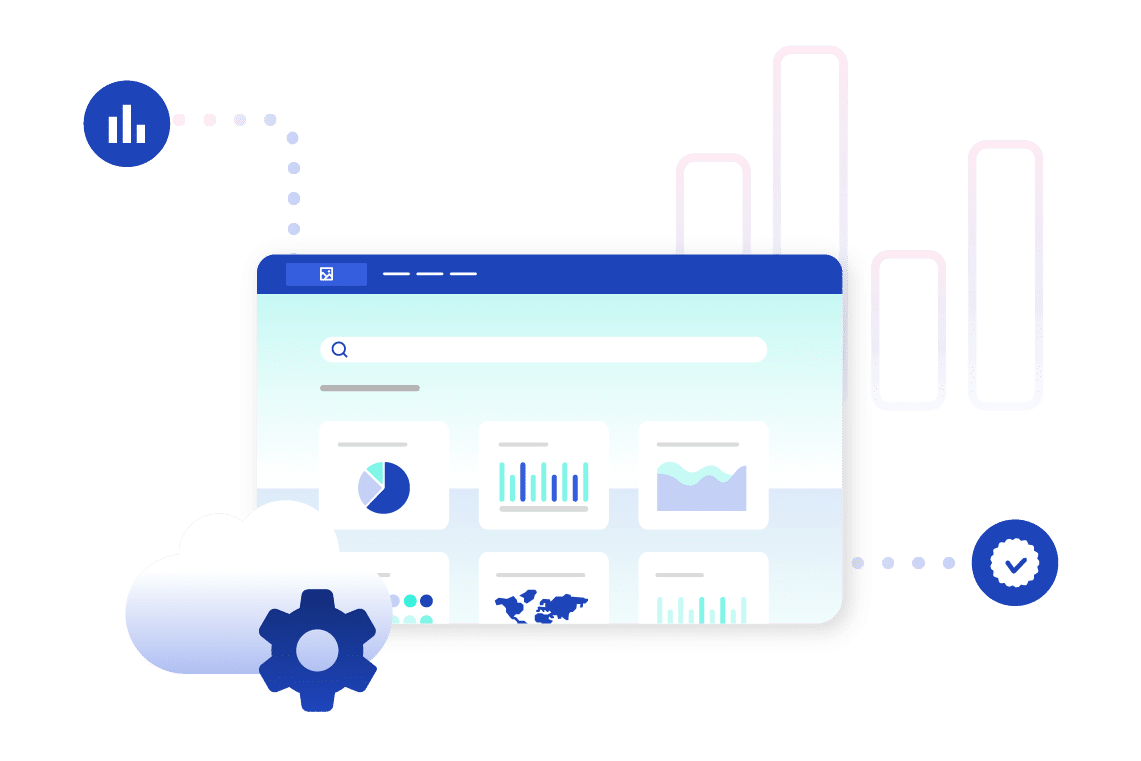
Increasingly organizations are storing and accessing data that is hosted in public, private or hybrid clouds. This brings its own challenges around governance, including security, visibility, availability and compliance, particularly if data is stored outside an organization’s home country. Cloud data governance aims to incorporate this hosted data into overall data governance programs and make it available seamlessly to users via data portals, while ensuring that consistent standards and protections are applied.
Find out how cloud data governance works in our blog.

To enable data democratization, data has to be available at scale, across the organization and with partners and wider society. This requires a flexible, scalable infrastructure that grows to meet changing data needs, while ensuring that data governance processes and frameworks are seamlessly applied across the organization. As they are SaaS-based, data portals are able to scale to meet the data sharing needs of even the largest companies and public bodies, providing 24×7 access to data in line with governance processes. This ensures consistency and industrializes data use, building a culture of data sharing.
Read more on scaling infrastructure within data democratization while ensuring rigorous governance in our blog.
Elia Group is one of the top five leading electricity transmission system operators (TSOs) in Europe. It is committed to driving decarbonization and meeting the European Union’s digital ambitions around opening and sharing data for the public good, looking to become data-centric by treating data as a corporate asset and providing it to its multiple stakeholders in tailored ways.
As part of this it chose to work with Opendatasoft to create its OpenDataElia portal. This shares a range of data across Elia’s ecosystem in English, French and Dutch, and currently has an average of 49,000 monthly users and over 26 million API calls.
By taking a holistic view that integrates open data within its wider platform, Elia has been able to create an effective data governance strategy across all of its data, including the current 96 open datasets it offers. This framework includes a single data glossary that provides a unified list of definitions that are used across the organization and comprehensive data lineage processes that track data from its creation all the way through the architecture, mapping dependencies to track the potential impact of any changes. Together, this delivers coherence across all datasets and amongst all data users within Elia.
Read more about Elia’s success in our customer success story.
Digital energy and automation company Schneider Electric is focused on harnessing data to help its customers and partners drive greater energy efficiency and sustainability. Its extensive technology stack includes multiple tools dedicated to data management, including data catalogs. However, these did not allow the organization to truly democratize data and add value to its usage.
Schneider Electric therefore turned to Opendatasoft to set up an internal portal accessible throughout the company: the Data Library. Thanks to this internal data portal, employees now have full access to reliable, well-governed data, stored in a single place. This means that data scientists can concentrate on analyzing data rather than preparing and processing it, while employees now have access to a series of customizable dashboards, and can share datasets internally.
This project allowed us to show that we were capable of capturing data, processing it, enriching it, and creating value from it, specifically in the fields of IoT, energy management and industry. The platform gave me the chance to understand the mechanics of generating value from our data, and that's very powerful.

Building on this, Schneider Electric has also been able to create Exchange, a data services marketplace which brings together a wide range of data, resources and tools for sharing and monetizing its data with partners. All of this goes through rigorous data governance processes before being made available, ensuring consistency and reliability and building trust. The marketplace delivers compelling data experiences to partners, while helping them to increase sustainability by reducing energy consumption.
UK Power Networks (UKPN) is the UK’s largest distribution network and system operator, responsible for power distribution to 8.3 million homes and businesses. Working with Opendatasoft, it launched its open data portal in October 2021 as part of its strategy to drive the energy transition and enable robust stakeholder engagement. Data is shared with a variety of stakeholders, including local councils, developers, citizens and the wider ecosystem. The portal now contains 89 datasets, backed up by a range of tailored visualizations and experiences designed to meet the needs of specific stakeholder groups.
Robust data governance is central to data sharing via the portal. UKPN operates on a ‘presumed open’ principle for data and runs a data triage process on every dataset before it is shared. Carried out as part of its governance framework, data is evaluated based on multiple criteria (such as privacy, security, ethics, intellectual property, data quality,) before deciding whether it can be published, or if it needs further work to anonymize it. As part of its commitment to transparency UKPN shares its data triage methods so that they can be used across the sector. All of this ensures stakeholders receive seamless access to trusted data, while protecting data privacy and security.
Successfully moving to a Net Zero world heavily depends on open data – ours and that of our ecosystem partners. It has to be interoperable, readily consumable and drive near real-time insight. We therefore wanted to break down barriers and build a community of stakeholders around our data.

Lamie mutuelle specializes in health and property insurance, and is building a company-wide data culture by giving all of its employees and managers a 360° customer view through self-service access to data. As part of this it has made Opendatasoft the cornerstone of its data management strategy. All data, whether collected internally or externally by partner organizations, is centralized on the Opendatasoft platform, before feeding employee dashboards, its CRM and customer/partner areas through APIs. This makes data accessible to all, saving time and increasing efficiency.
Data governance is especially important as much of this data comes from external sales partners, before flowing into Lamie mutuelle’s systems. This means it has to be checked for quality, such as against the government database of companies to ensure information is correct, before it is then reused on the corresponding company page for that organization. As part of governance, it is using data lineage to map how data flows through its systems and to better understand how it is used internally.
Our challenge was to consolidate our entire customer portfolio, which was spread across our various delegates. Opendatasoft has become the central component of our information system, enabling us to share data, manage its access, and distribute it both internally and externally.

Implementing the Opendatasoft platform has allowed Lamie mutuelle to optimize operations and harness more informed strategic decision-making, as well as plan budgets more accurately through access to high-quality, comprehensive and well-governed data.